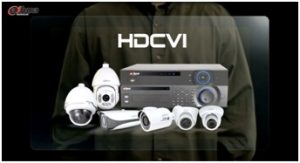
HD analogue is quickly becoming the mainstream of analogue video. By 2018, over 90% of analogue cameras will be HD analogue (according to a 2016 IHS report). Dahua led the industry to introduce HDCVI Technology in 2012, and continues to enhance the technology leadership by bringing state of the art performance in terms of resolution, light sensitivity, intelligence and usability to the HDCVI community.
According to Dahua the comprehensive offering of HDCVI matches up very well to the IP equivalent. Customers can choose the most suitable system for their sites without being constrained to IP only. The emergence of multi-mode DVRs, which record video from HDCVI, TVI, AHD, CVBS and IP cameras, makes it very easy to upgrade a site by increments.
Future development of HD analogue must fit the needs of IoT and big data applications, which is driving the value of security systems over the next few years. AI (Artificial Intelligence) Deep Learning will be a key technology component to enable this to happen.
To enter a new era, Dahua is introducing the HDCVI 4.0 technology framework, with 3 key components: 4K-HDCVI for superior video capture, IoT-HDCVI for multi-dimensional sensing and AI-HDCVI to transform HDCVI-video into searchable Boolean data. New products will be introduced throughout the year in 2017 to enhance the user experience of HDCVI customers. The HDCVI community can expect a lot more opportunities to use HDCVI technology to expand security application space.
Dahua 4K-HDCVI adopts 4K ultra HD image acquisition and back-end DVR storage. HDCVI technology architecture overcame the common bottleneck of transmission bandwidth to achieve high resolution video previously only available on IPC. This is a major breakthrough to extend the potential of HDCVI in the future. Dahua IoT-HDCVI technology, combining with IoT sensing technology, enables cameras to surpass the basic function of providing video information. Utilising IoT sensors, coaxial cables are capable of transmitting not only video signals, but also information such as alarms, and temperature and humidity.
The HDCVI technology architecture supports complex data transmission between the camera and the DVR, and makes it possible for multi-dimensional sensing cameras and DVRs to form an IoT solution. The near real-time transmission of HDCVI also improves the responsiveness of IoT applications. Dahua AI-HDCVI technology integrates HDCVI video and audio with AI (Artificial Intelligence) Deep Learning. Dahua describes AI-HDCVI as performing with near-human level accuracy in image classification and voice recognition to transform HDCVI video and audio into searchable Boolean data. The output of these analyses could solve resource allocation problems for example, in the retail industry with customers and or in the management of city transportation with vehicle traffic analysis.
The scalable and expandable architecture of HDCVI enables future-proof products and solutions to be developed. It protects customers’ investment by allowing seamless upgrade to new technologies as they emerge. Dahua HDCVI 4.0 comprises of 4K-HDCVI, IoT-HDCVI and AI-HDCVI leads the industry into a new era of higher resolution, more intelligent and convenient.
The 4K-HDCVI is the first product launched by Dahua Technology in 2017. While the industry is trying to break through the bandwidth constraint of coaxial cable transmission, Dahua releases the first 4K Ultra HD solution by deploying superior signal modulation mechanism and noise reduction techniques. It transmits 4K video signal up to 700m (RG6 cable). The Dahua 4K-HDCVI offering includes 4K box camera, 4K IR bullet& dome camera, 4K fisheye panoramic camera, 4K multi-sensor 180 degree panoramic camera, and a series of 4K supported XVR (multi-mode DVR). Dahua 4K-HDCVI offering delivers 3840(H) x 2160(V) ultra-high resolution images, equivalent to 4X1080 HD camera’s, to achieve wide angle coverage and clear video evidence at the same time.
Previous HD analogue technologies, limited by the data transmission capacity of coaxial cables, were not able to provide 4K resolution. Dahua Technology, leveraging their effective signal modulation mechanism and noise reduction techniques, developed TX & RX chipsets autonomously to break through this limitation, and thereby Dahua Technology brings HDCVI into the 4K era.











